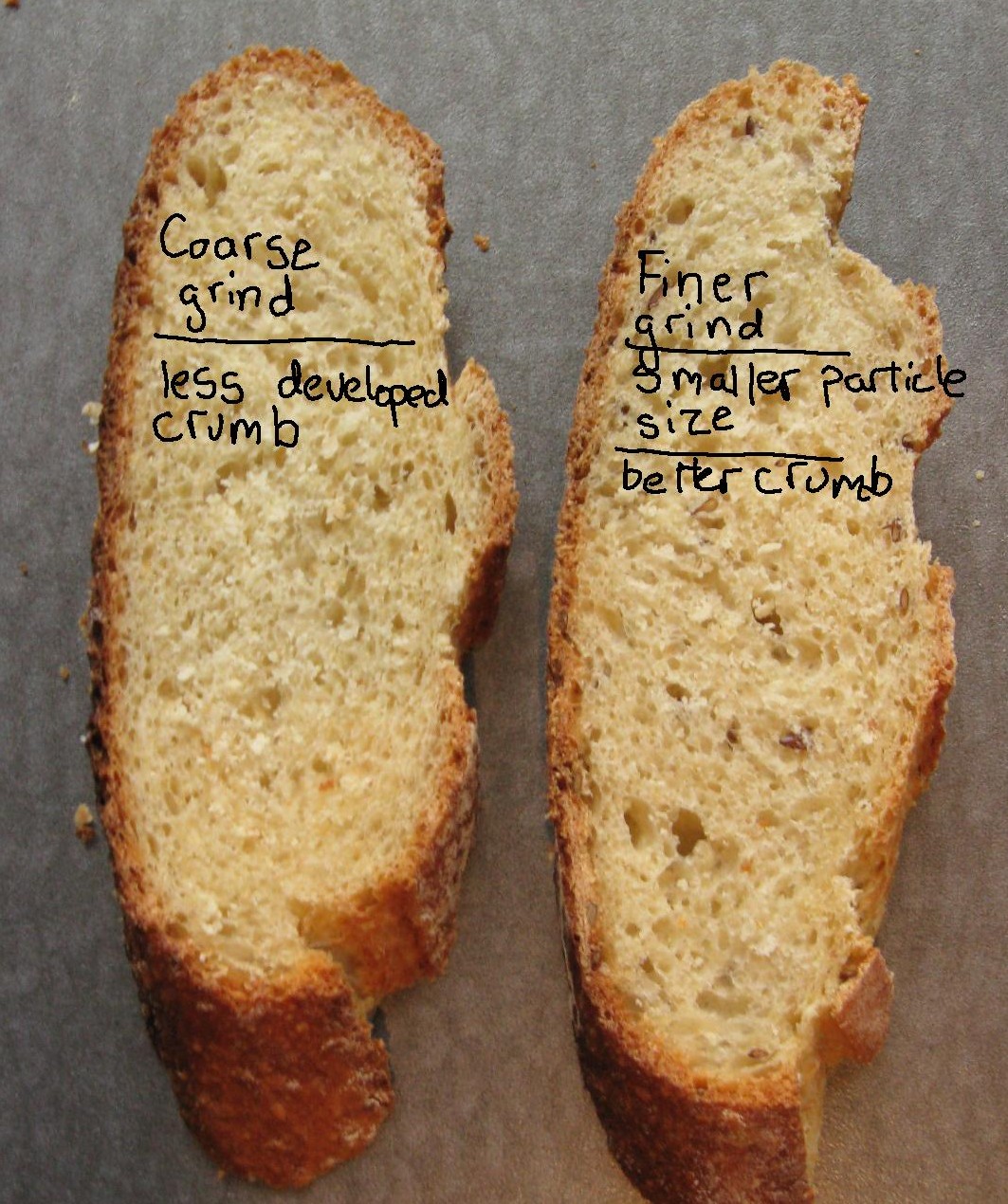3.15.2008
Flour Grind, Particle Size Effect
The past couple weeks, I've been playing with fresh ground flour from red wheat berries. I've ground it using a coffee grinder on the finest setting. Still kind of coarse but incorporating it into my baguette recipe for 1/3 of the flour bill. On the left is a typical cross section using this flour. It's got what I characterize as an underdeveloped crumb. No long, swirly streaks of crumb but a more granular appearance.
On the right is a slice with using a slight variation. Still a 1/3 substitution of the flour but I've processed the flour to an additional fineness with a whirly coffee grinder. These mills are inadequate for large quantities of flour but was appropriate for the 100 g I needed for this experiment. It was a finer grind (smaller particle size) by visual inspection and in the final loaf, it showed. The crumb appears more "swirled" and had a better texture. Still not great though.
I've been doing this because I don't like any whole wheat flour I've ever tried and want to "grain up" my breads. Commercial whole wheat flours suck. Bitter and dark and bad tasting in a lean loaf. They're fine for enriched (fat and sweetener) loaves. I may be giving up this effort soon since the texture of the final loaf is inadequate.
I've heard these same observations on message boards of from communities of people who buy fancy mills and make their own flour. The big particle size apparently isn't good for gluten development and the final loaves are grainy.
I'm also currently testing King Arthur's White Whole Wheat with limited success. No big conclusions, just an interesting observation I thought I'd share. Experiments don't always yield a a complete story.
Subscribe to:
Comments (Atom)





